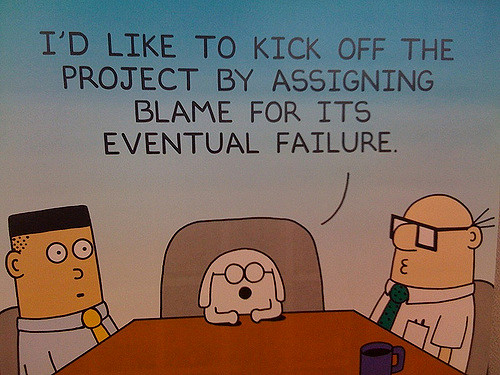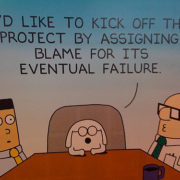Bad Bosses – Are You One?
 Mike Morrow-Fox and Maureen co-write this blog post as a companion to the podcast recording on Bad Bosses.
Mike Morrow-Fox and Maureen co-write this blog post as a companion to the podcast recording on Bad Bosses.
Bill comes into the office. He is swamped by the work he must accomplish – preparing for a high-visibility client meeting, meeting with his executive leadership, and consolidating information to create his monthly reports. On top of this, he has seven highly competent direct reports. He’s grateful that his team is so effective because he doesn’t need much time with them. He really likes his team and wishes to do more mentoring, but for now, he needs to keep his head down and finish his work. As we read in the article, his approach is ineffective because he is not actively engaging them.
In a January 2016 article published in the Gallup Business Journal, ‘Gallup has been tracking employee engagement in the U.S. since 2000. Though slight ebbs and flows have occurred, less than one-third of U.S. employees have been engaged in their jobs and workplaces during these 15 years. According to Gallup Daily tracking, 32% of employees in the U.S. are engaged — meaning they are involved in, enthusiastic about, and committed to their work and workplace. Worldwide, only 13% of employees working for an organization are engaged.’
Bosses play a major role in employee engagement and disengagement. Engaged bosses drive engagement, while disengaged bosses drive disengagement and, even, active disruption.
Let’s start with a definition. What is the difference between a leader and a boss? Leaders set the cultural tone and strategic vision; bosses are the employee’s conduit to the larger organization.
We understand that there are some obvious characteristics that would make anyone a bad boss, like throwing temper tantrums and micromanaging. We’re going to talk about subtler differences.
| Bad Bosses | Great Bosses |
| Let employees “do their thing” | Develop their employees, including discussions on strength-based leadership data |
| Protect their departments | Facilitate cross-organizational collaboration |
| Are customer-focused at the expense of other needs | Are priority-focused, helping employees self-manage competing priorities |
| Are busy with day-to-day operations | Are busy with continuous improvement |
| Recognize their employees to reward them for completing an assignment | Recognize their employees as a regular part of development and connection with the mission |
| Put on a good game face | Are authentic and compassionate: “Someone at work cares about me.” |
| Tell their employees “how.” | Tell their employees “why.” |
‘If your manager ignores you, there is a 40% chance that you will be actively disengaged or filled with hostility about your job. If your manager is at least paying attention, the chances of you being actively disengaged go down to 22%. But if your manager primarily focuses on your strengths, the chance of your being actively disengaged is just 1% or 1 in 100.’
The number one action great bosses take is regularly taking time to engage with their employees and focusing on employee strengths during these interactions. Great bosses also have regular conversations about employee development, again focusing on employee strengths more than deficiencies. Going back to Bill in the opening story, he would likely have dramatically improved their engagement if he had allocated time each week to talk to employees, discuss their projects, and build on their strengths to help them continue to thrive. It seems rather easy, yet it is not common.
Most of us have had bad boss experiences and found a way to cope until we changed jobs or the bad boss rotated out. The question we pose is, what cost do you incur if you happen to be less involved than your employees need you to be, or if you are primarily focused on correcting and giving guidance rather than balancing guidance to improve performance with helping employees improve their strengths?
References:
Rath,T.,& Harter, J. (2010, July). Composite of several submissions. Servant Leadership Focus Newsletter, Volume 4, Issue 7.
Mann, Annamarie, and Harter, Jim. (2016, January). Gallup.com Business Journal.
Photo credits: www.flickr.com creative commons Arpit Gupta
About the authors:
Maureen Metcalf is the Founder and CEO of Metcalf & Associates. She is an executive advisor, a speaker, coach, and the author of an award-winning book series focused on innovating how you lead. She is also on the faculty of universities in the US and Germany.
Mike Morrow-Fox, MBA, has over 20 years of experience in leading technology and human resources operations for health care, education, banking, and nonprofit organizations, as well as several years of university teaching. His bachelor’s degree focused on Industrial Psychology and Employee Counseling and his MBA focus was on Organizational Leadership. He is currently completing his Doctorate in Educational Leadership. He is a contributor and thought partner for several of the innovative leadership books.


Leave a Reply
Want to join the discussion?Feel free to contribute!